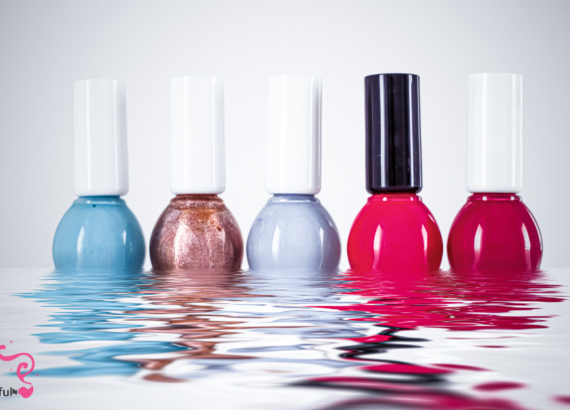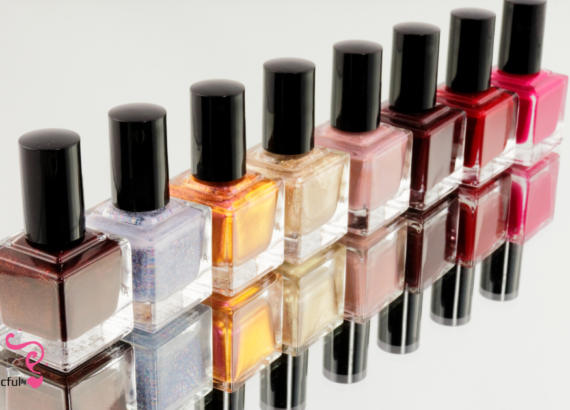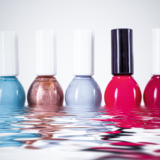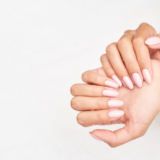Can I Use Regular Nail Polish on Acrylic Nails? A Comprehensive Guide

Acrylic nails have become a popular choice for those seeking long-lasting and durable manicures. They offer the flexibility to achieve various nail shapes and lengths while maintaining a strong and resilient structure. With acrylic nails, you can experiment with different looks and finishes. One common question that arises is whether regular nail polish can be used on acrylic nails. This comprehensive guide will delve into the compatibility of regular nail polish with acrylic nails, provide insights into application techniques, potential issues, and offer best practices for maintaining your manicure.
1. Understanding Acrylic Nails
Acrylic nails are a type of artificial nail extension made by combining a liquid monomer and a powder polymer. When mixed, these substances form a hard, protective layer that is applied over the natural nails. Acrylic nails are renowned for their strength and durability, making them a preferred choice for individuals who want longer, polished nails without the need for frequent touch-ups. The acrylic mixture is sculpted onto the natural nails or applied using nail tips to create the desired length and shape.
2. Regular Nail Polish vs. Gel and Dip Powders
To understand how regular nail polish interacts with acrylic nails, it’s helpful to compare it with other popular nail products like gel polish and dip powders.
- Regular Nail Polish: Regular nail polish is the most traditional form of nail color. It comes in various colors and finishes, such as matte, glossy, and glittery. Regular nail polish requires a top coat to enhance its longevity and shine. It is removed with nail polish remover, typically containing acetone.
- Gel Polish: Gel polish is known for its long-lasting properties. It is applied similarly to regular polish but requires curing under a UV or LED lamp to harden. Gel polish is less prone to chipping and provides a high-gloss finish. Removal involves soaking the nails in acetone, which can be more time-consuming.
- Dip Powders: Dip powder nails involve applying a colored powder over a base coat, followed by a top coat to seal it. This method is known for its durability and vibrant colors. Dip powders do not require curing under a lamp, but removal can also be an involved process, often requiring soaking in acetone.
3. Can You Use Regular Nail Polish on Acrylic Nails?
Yes, you can use regular nail polish on acrylic nails. The smooth and even surface of acrylic nails makes them an ideal canvas for regular nail polish. However, there are a few important considerations to keep in mind:
- Adhesion: Regular nail polish adheres to acrylic nails as effectively as it does to natural nails. The acrylic surface provides a good base for the polish, ensuring that the color goes on evenly and appears vibrant.
- Longevity: While regular nail polish can be used on acrylic nails, it may not last as long as gel or dip powder options. Regular nail polish is more susceptible to chipping and wear, so be prepared for more frequent touch-ups.
- Removal: Regular nail polish is easily removed with nail polish remover, which is a significant advantage if you like to change your nail color often. However, acetone-based removers can weaken the acrylic over time, so use them sparingly.
4. How to Apply Regular Nail Polish on Acrylic Nails
Applying regular nail polish on acrylic nails is straightforward. Here is a step-by-step guide to ensure a professional-looking manicure:
- Preparation:
- Clean the Nails: Make sure your acrylic nails are clean and free from any oils or residues. This ensures better adhesion of the nail polish.
- Buff the Surface: Lightly buff the surface of your acrylic nails if necessary. This helps to create a smoother base for the polish and enhances its longevity.
- Base Coat:
- Apply a Base Coat: Start with a thin layer of base coat on your acrylic nails. The base coat helps the polish adhere better and prevents potential staining of the acrylic.
- Application:
- First Coat: Apply a thin layer of regular nail polish. Begin at the base of the nail and brush the polish towards the tip. Applying thin layers helps to avoid streaks and uneven coverage.
- Drying: Allow the first coat to dry completely before applying a second coat. This helps achieve a more opaque and uniform color.
- Top Coat:
- Finish with Top Coat: Apply a top coat to seal the color and add shine. The top coat also helps extend the life of your manicure by providing an extra layer of protection.
- Drying:
- Complete Drying: Allow your nails to dry completely. For quicker drying, you can use a quick-dry top coat or a nail dryer. This minimizes the risk of smudging.
5. Tips for Maintaining Acrylic Nails with Regular Polish
To keep your acrylic nails looking fresh and beautiful with regular nail polish, consider the following tips:
- Avoid Excessive Use of Acetone: Acetone-based nail polish removers can weaken acrylic nails over time. Use acetone sparingly and consider non-acetone removers for frequent polish changes.
- Moisturize: Acrylic nails can become dry and brittle. Regularly apply cuticle oil or hand cream to keep your nails and cuticles hydrated and healthy.
- Protect Your Nails: Use gloves when engaging in activities that expose your nails to harsh chemicals or excessive moisture. This helps protect both your acrylics and the polish.
- Regular Touch-Ups: Regular nail polish is more prone to chipping compared to gel or dip powder. Be prepared for frequent touch-ups to maintain a polished look.
- Avoid Peeling: Avoid peeling off nail polish, as it can damage the acrylic and the natural nail underneath. Always use nail polish remover to gently remove polish.
6. Potential Issues and Solutions
- Chipping: Regular nail polish tends to chip faster on acrylic nails. To minimize chipping, use a high-quality top coat and avoid using your nails as tools. Consider applying a clear strengthening coat underneath the color polish for added protection.
- Color Staining: Dark or highly pigmented nail polishes can sometimes stain acrylic nails. Applying a base coat can prevent staining and provide a barrier between the polish and the acrylic.
- Peeling Polish: Peeling polish may occur due to improper application or issues with the acrylic surface. Ensure that the acrylic surface is clean and properly prepared before applying the polish. If peeling continues, it might be necessary to consult a nail professional for advice.
7. Alternative Options to Regular Nail Polish
If you’re looking for alternatives to regular nail polish that offer greater durability or a different finish, consider these options:
- Gel Polish: Provides a long-lasting, high-gloss finish and resists chipping. Ideal for those who want a manicure that lasts longer without frequent touch-ups.
- Dip Powders: Offers vibrant colors and durability without the need for a UV lamp. Dip powders are an excellent option for those seeking a robust manicure with minimal maintenance.
- Shellac: A hybrid between regular nail polish and gel, Shellac provides a long-lasting finish with easy removal. It requires curing under a UV lamp and is known for its durability.
CONCLUSION
Using regular nail polish on acrylic nails is a feasible option for those who prefer traditional nail color over gels or dip powders. Regular nail polish offers versatility and easy removal but may not provide the same level of longevity as other nail products. By following proper application techniques and maintaining your acrylic nails, you can enjoy a beautiful and polished look with regular nail polish. Whether you stick with regular polish or explore other options, finding what works best for your style and lifestyle is key to achieving a perfect manicure.








